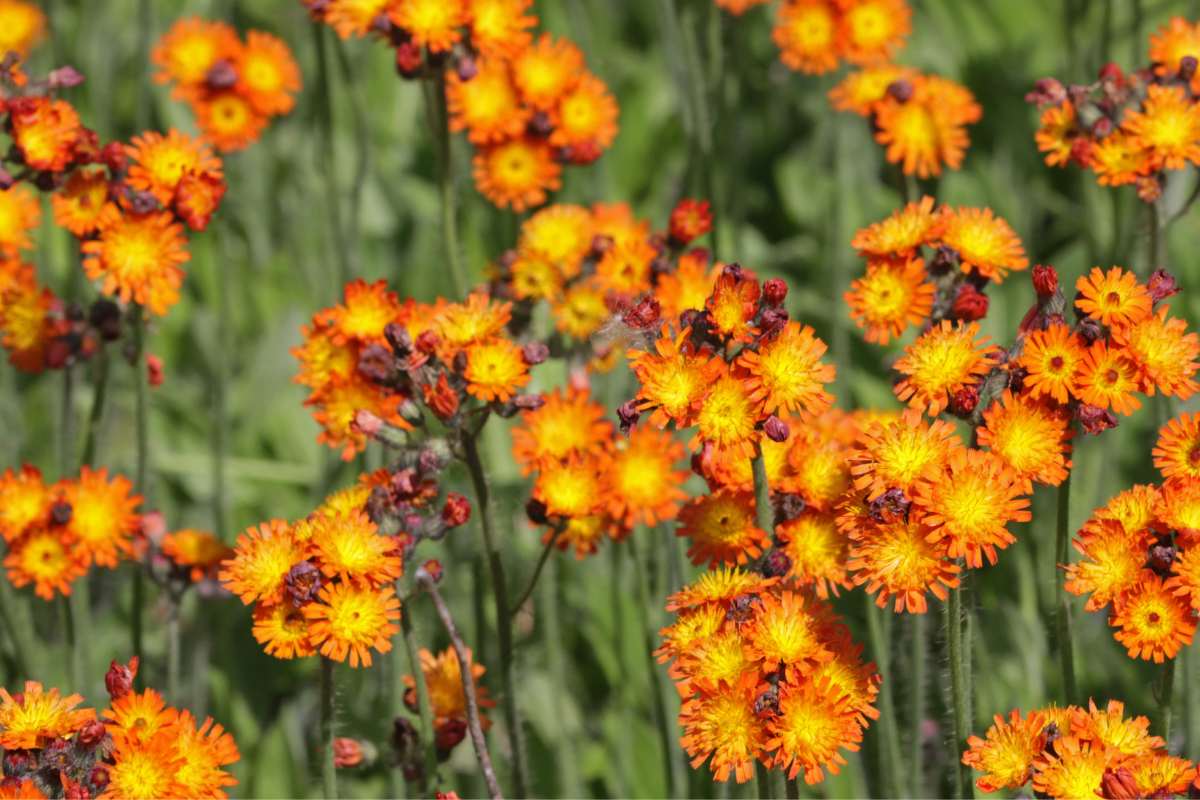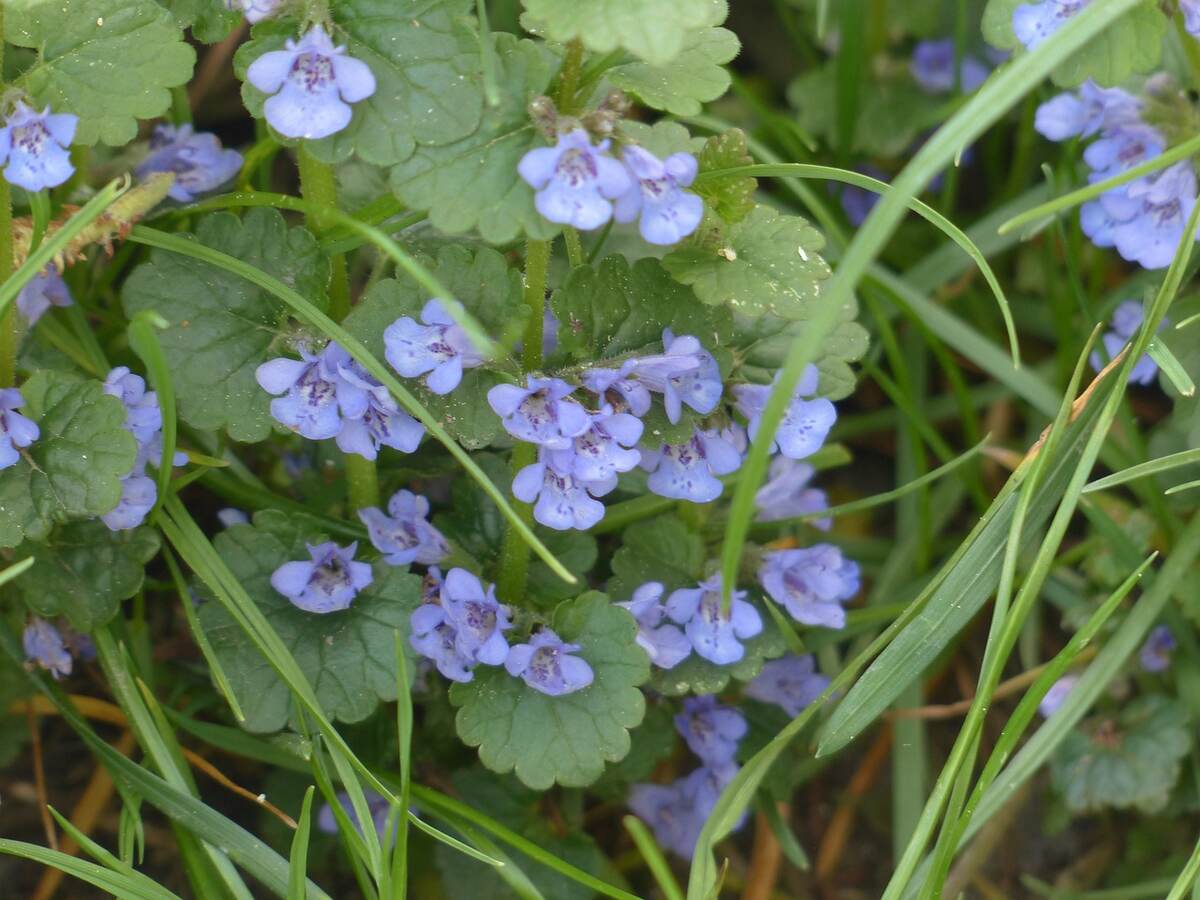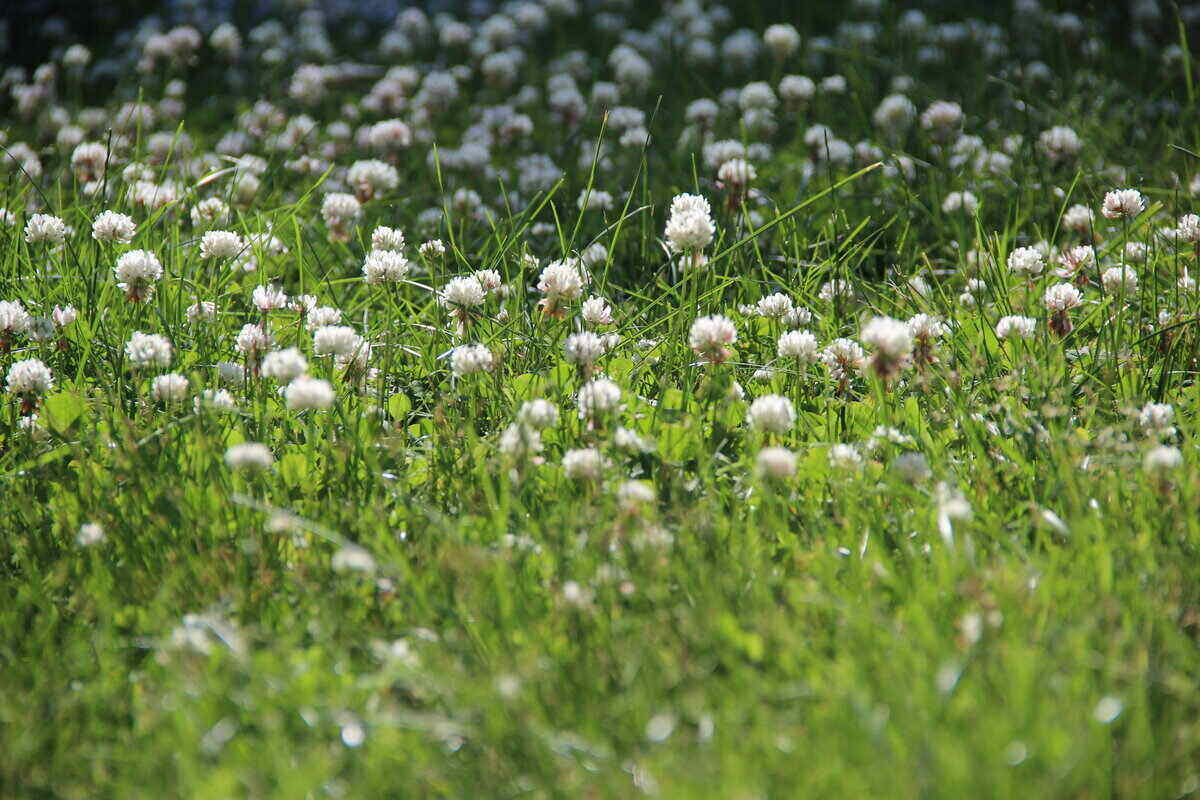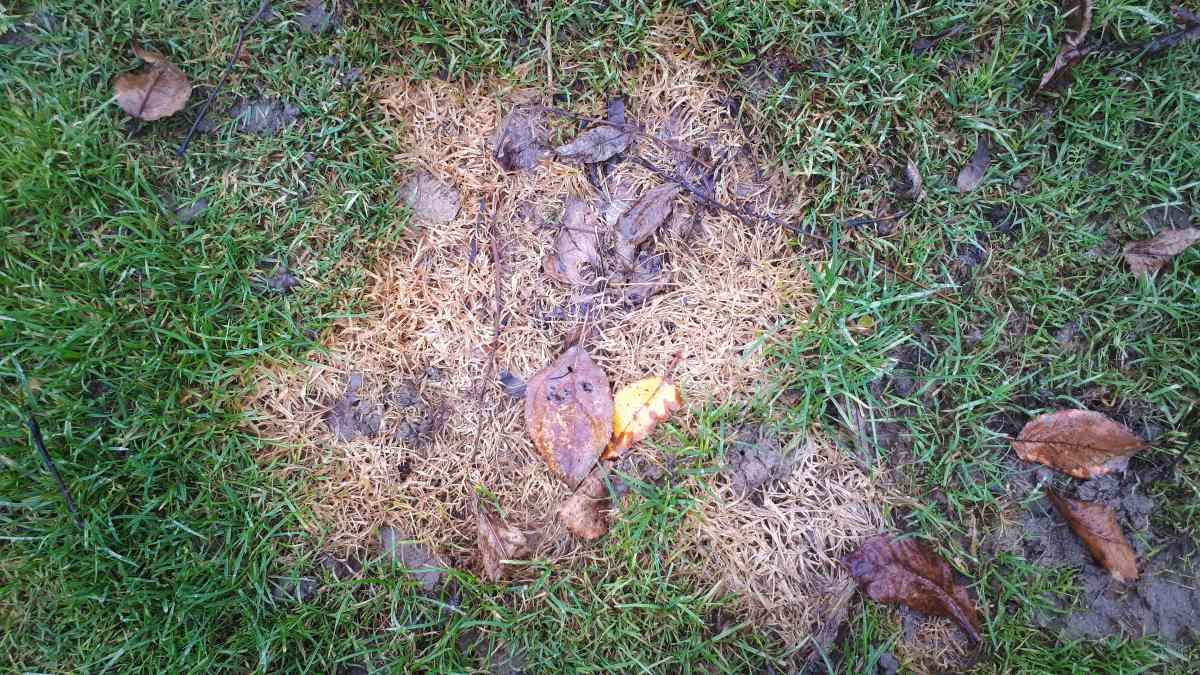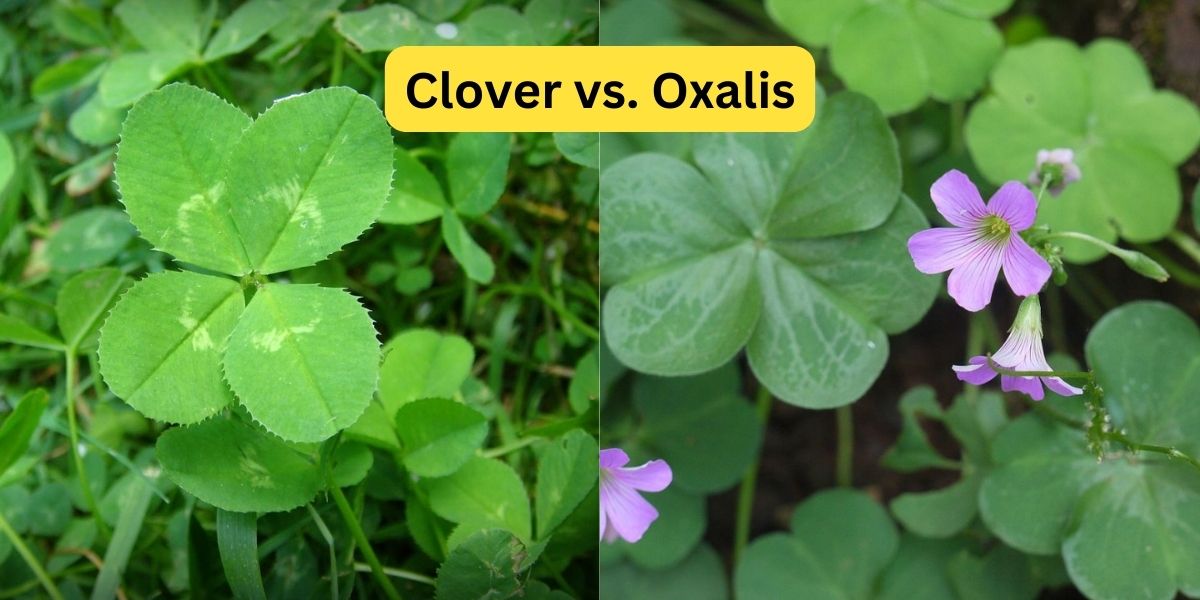
While they appear to be twinning with their low-growing structure, fast-spreading growth rate, and trifoliate leaves (especially when no flowers are present), clover and oxalis are two distinctly different plants belonging to different family classifications. Here, we’ll examine clover vs. oxalis and what their differences are — from leaf markings and shape to flower appearance.
Clover vs. Oxalis
Clover
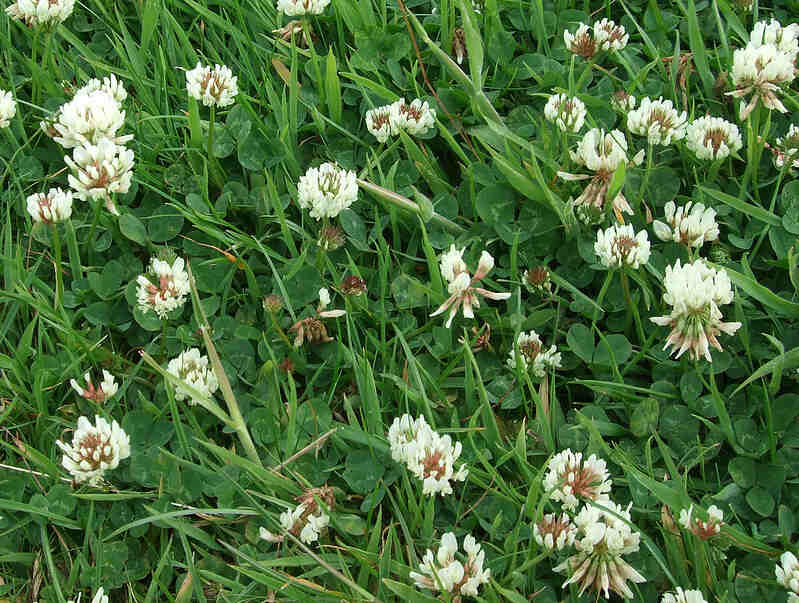
While there are more than 300 varieties of clover, the one that most commonly invades lawns is white clover (trifolium repens). Identified by its three, green, oval-shaped leaves (each of which is often adorned with a white “v”-shaped marking) and its bulb of clustered white flowers, this member of the legume family is an invasive plant that spreads swiftly by its stolons (underground stems) and by reseeding itself in the soil.
Spotting clover growing in your lawn can be a sign that your soil lacks nitrogen, and since clover can draw nitrogen from the air, it can help improve soil health. (Twice yearly applications of fertilizer can do that, too, though, and help prevent a clover influx from occurring.)
The three types of white clover are:
- Small/low-growing (wild white)
- Intermediate (Dutch clover)
- Large (Ladino clover)
Clover quick facts:
- Plant Type: Weedy ground cover
- Duration: Perennial
- Bloom Time: Spring and summer
- Mature Height: 4 to 6 inches
- Growth Rate: Aggressive
Oxalis
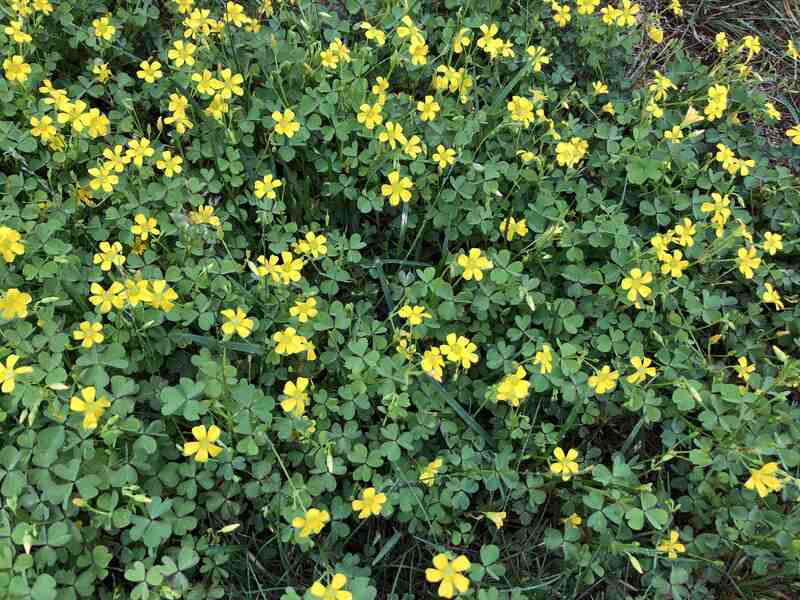
Commonly confused with clover because their leaves look quite similar, low-growing oxalis has heart-shaped leaves rather than oval-shaped ones, and depending on the type, the leaves can be green, purple, or red.
Another difference? Oxalis is not a nitrogen-rich plant. Also known as “sour grass” and “false shamrock,” during its flowering season, the most common type (yellow wood sorrel or oxalis stricta) boasts small, yellow flowers in contrast to clover’s white, bulbous flower heads. There are 800-plus variations of oxalis, including:
- Creeping wood sorrel (oxalis corniculata)
- Pink wood sorrel (oxalis articulata)
- Common wood sorrel (oxalis acetosella)
Oxalis stricta quick facts:
- Plant Type: Weed
- Duration: Perennial
- Bloom Time: Spring, summer, and fall
- Mature Height: 2 inches to 1 foot
- Growth Rate: Fast
Benefits of Clover vs. Oxalis
While both of these plants are considered weeds by many, some homeowners still choose to use them as groundcovers for a more eco-friendly lawn. Let’s take a look at some benefits to that:
White Clover
- Fixes nitrogen deficiency in soil
- Attracts pollinators
- Great for farmers; nutritious food for livestock
- Maintains green color from spring to late fall/early winter
- Prevents other weeds from growing
- Low-growing; doesn’t need much mowing
- Helps avoid soil compaction
- Edible (in small quantities)
- Adds beauty to yard
Oxalis
- Edible (in small quantities)
- Attracts pollinators
- Some variations good for ornamental planting
- Deer resistant
- Adds organic matter to soil; reduces compaction
Disadvantages of Clover vs. Oxalis
Some downsides to growing either of these plants include:
White Clover
- Attracts pollinators (a con if you’re allergic to or very scared of bees or wasps)
- Not great for heavy foot traffic
- Invasive; can take over gardens and neighbors’ yards
- May need reseeding every few years
Oxalis
- Difficult to control its spread; invasive
- Toxic to pets
- Resistant to some herbicides
- Can ruin the look of a green lawn
How to Get Rid of Clover or Oxalis
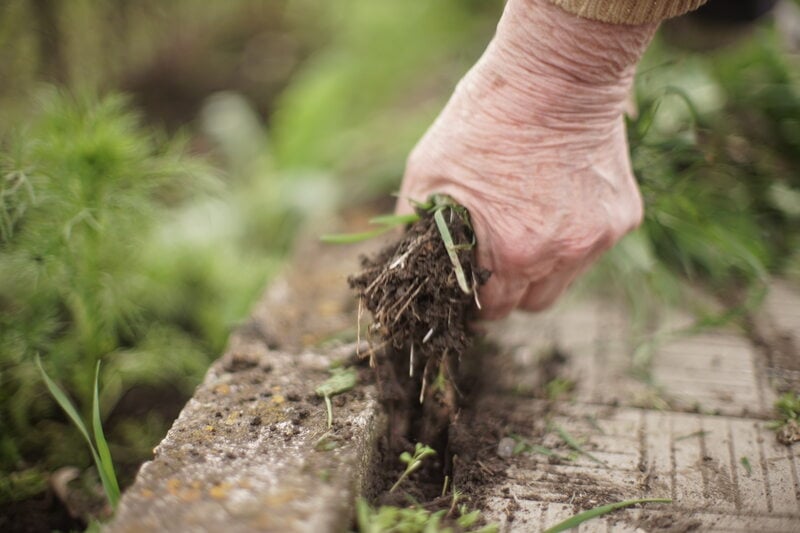
To prevent any type of weed from invading your lawn in the first place, always make sure to stay on top of your fertilization schedule as appropriate to your climate zone. It’s also important to water your grass regularly and allow it to grow between 3 and 4 inches high — this will allow the grass roots to grow deeper and the blades to grow thicker, which can help impede the occurrence of weeds.
If you’re already starting to notice clover or oxalis sprouting in your lawn, try these remedies:
Clover Control Methods
Pull It Up. This may be feasible for small amounts of clover growing in your lawn, but if you have a whole mass of the stuff, one of the other tips mentioned here may work better. Another note: Clover roots can reach 8 feet deep, which can make them difficult to manually pull up.
Smother It. By covering a sizable area of white clover with a tarp or plastic bag, you’ll effectively cut off its access to sunlight and oxygen. Over a few weeks, the clover will suffocate and die off.
Use a Post-Emergent Herbicide. Apply a broadleaf weed killer to your lawn in the fall, taking care to choose one that won’t also kill off your grass. If you have pets or other animals, you may want to reconsider this option, as the formulas may be toxic to them.
Apply Corn Gluten Meal. This method works by preventing new roots from growing in the soil. Additionally, this technique won’t damage any nearby lawn grass. The recommended dosage is 20 pounds per 1,000 feet. Read our guide on corn gluten meal for more information.
Oxalis Control Methods
Hand Pull Them. You can try pulling oxalis — roots and all — prior to the weed producing flowers. (If allowed to flower first, it’ll be hard to control using this method, as it will have begun reseeding itself.)
Dig Them Up. Conversely, you can opt to dig up the full plant; experts recommend taking this route during oxalis off-season while it’s not actively growing.
Spray Herbicides. Understand, though, you’ll need to reapply several times before the oxalis will be eradicated. Glyphosate is the most effective herbicide for this weed; however, it is nonselective and can kill any other plant it touches (check out our glyphosate guide for more information). Be sure to cover plants you’d like to keep when using this method to protect them.
Try Solarization. This method involves covering the affected area with clear plastic to allow heat from the sun to make the soil so hot it kills the weed.
FAQ About Clover vs. Oxalis
Do clover and oxalis make good groundcovers?
Prior to the 1950s, white clover was a popular choice for lawns, often coming in grass seed mixes. Once herbicides became more mainstream around this time, though, the lush, green lawn was thought to be more favorable. Still, there are some homeowners today who like the look and eco-friendliness of clover lawns; they also appreciate that white clover infuses their lawn with nitrogen.
When it comes to oxalis as a groundcover, it really depends on the type of oxalis you plan to grow. You’ll want to avoid the invasive oxalis stricta, which we’ve discussed in this article. Opt, instead, for Drummond’s wood sorrel (oxalis drummondii) or Iron Cross (oxalis tetraphylla).
Are there any ornamental usages for clover vs. oxalis?
For oxalis, yes. A few of the non-invasive forms commonly used ornamentally as indoor plants include:
- Purple wood sorrel (Oxalis triangularis)
- Pink wood sorrel (Oxalis articulata)
- American wood sorrel (Oxalis montana)
What are better groundcover options to clover and oxalis?
To avoid having these weedy plants overtake your lawn — and potentially your neighbors’ — try a less-invasive groundcover like:
- Japanese Spurge (pachysandra terminalis)
- Basket-of-Gold (aurinia saxatilis)
- Creeping Sedum (Sedum humifusum)
- Sweet Woodruff (Galium odoratum)
Hire a Pro to Get Rid of Clover and Oxalis
If the DIY methods mentioned above don’t work to clear your lawn of these unwanted weeds, call in a landscaping pro near you. They’ll recommend a plan of control, prevent the weeds from returning, and maintain a healthy lawn.
Main Photo Credit (created with Canva Pro):
Clover (left): Joe Papp / Wikimedia Commons / CC BY-SA 3.0
Oxalis (right): Dinesh Valke from Thane, India / Wikimedia Commons / CC BY-SA 2.0
